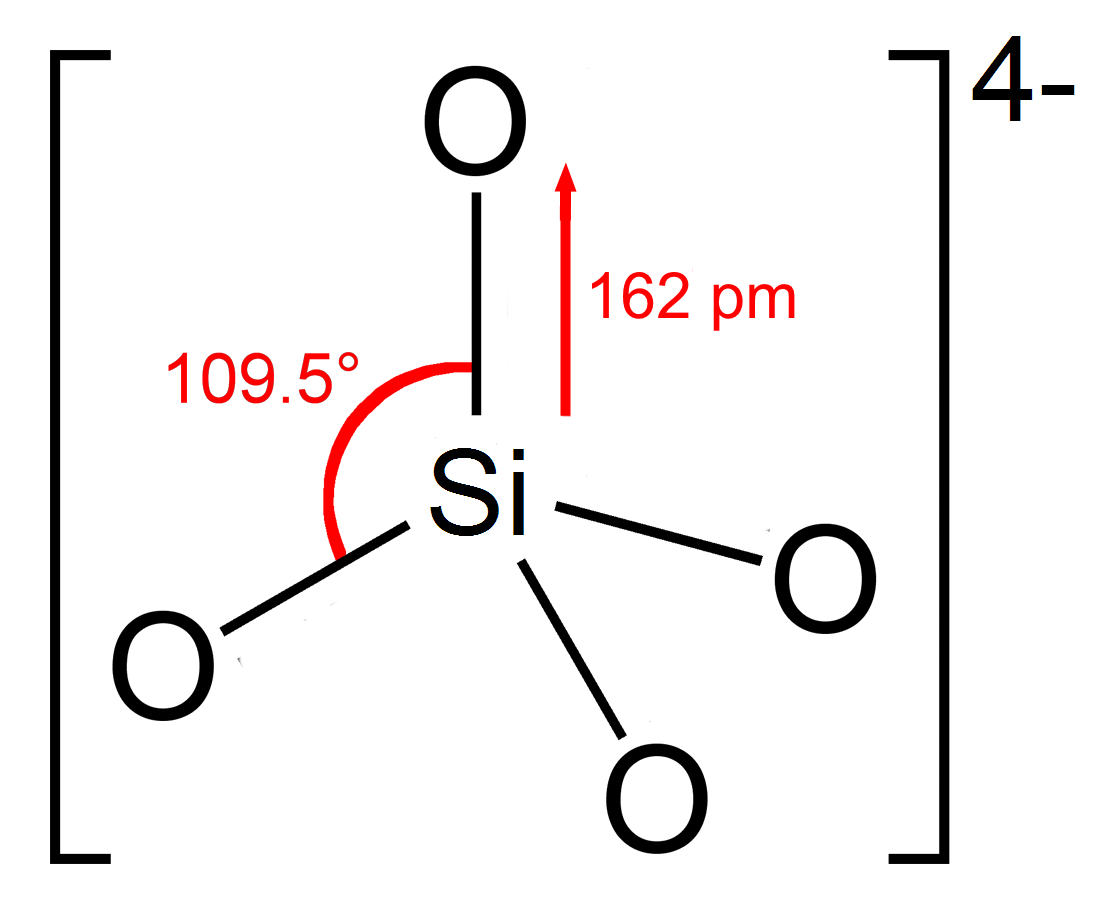Orthosilicate on:
[Wikipedia]
[Google]
[Amazon]
 In chemistry, orthosilicate is the anion , or any of its salts and
In chemistry, orthosilicate is the anion , or any of its salts and
 In chemistry, orthosilicate is the anion , or any of its salts and
In chemistry, orthosilicate is the anion , or any of its salts and ester
In chemistry, an ester is a compound derived from an acid (either organic or inorganic) in which the hydrogen atom (H) of at least one acidic hydroxyl group () of that acid is replaced by an organyl group (R). These compounds contain a distin ...
s. It is one of the silicate
A silicate is any member of a family of polyatomic anions consisting of silicon and oxygen, usually with the general formula , where . The family includes orthosilicate (), metasilicate (), and pyrosilicate (, ). The name is also used ...
anions. It is occasionally called the silicon tetroxide anion or group.C. A. Kumins, and A. E. Gessler (1953), "Short-Cycle Syntheses of Ultramarine Blue". ''Indunstrial & Engineering Chemistry'', volume 45, issue 3, pages 567–572.
Orthosilicate salts, like sodium orthosilicate, are stable, and occur widely in nature as silicate minerals
Silicate minerals are rock-forming minerals made up of silicate groups. They are the largest and most important class of minerals and make up approximately 90 percent of Earth's crust.
In mineralogy, the crystalline forms of silica (silicon dio ...
, being the defining feature of the nesosilicates. Olivine
The mineral olivine () is a magnesium iron Silicate minerals, silicate with the chemical formula . It is a type of Nesosilicates, nesosilicate or orthosilicate. The primary component of the Earth's upper mantle (Earth), upper mantle, it is a com ...
, a magnesium or iron(II) orthosilicate, is the most abundant mineral in the upper mantle.
The orthosilicate anion is a strong base, the conjugate base of the extremely weak orthosilicic acid (p''K''a2 = 13.2 at 25 °C). This equilibrium is difficult to study since the acid tends to decompose into a hydrated silica condensate.
Structure
The orthosilicate ion or group has tetrahedral shape, with one silicon atom surrounded by four oxygen atoms. In the anion, each oxygen carries a unit negative charge. The Si–O bond is 162 pm long. In organic compounds like tetramethyl orthosilicate, each oxygen is formally neutral and is connected to the rest of the molecule by a singlecovalent bond
A covalent bond is a chemical bond that involves the sharing of electrons to form electron pairs between atoms. These electron pairs are known as shared pairs or bonding pairs. The stable balance of attractive and repulsive forces between atom ...
.
Uses
Europium doped barium orthosilicate (Ba2SiO4) is a commonphosphor
A phosphor is a substance that exhibits the phenomenon of luminescence; it emits light when exposed to some type of radiant energy. The term is used both for fluorescent or phosphorescent substances which glow on exposure to ultraviolet or ...
used in green light-emitting diode
A light-emitting diode (LED) is a semiconductor device that emits light when current flows through it. Electrons in the semiconductor recombine with electron holes, releasing energy in the form of photons. The color of the light (corre ...
s (LEDs). Phosphor for blue LEDs can be made with strontium doped barium orthosilicate. Barium orthosilicate is a major cause of cathode poisoning in vacuum tube
A vacuum tube, electron tube, thermionic valve (British usage), or tube (North America) is a device that controls electric current flow in a high vacuum between electrodes to which an electric voltage, potential difference has been applied. It ...
s.
Organic chemistry
Although very important in inorganic chemistry and geochemistry, the orthosilicate ion is rarely seen in organic chemistry. Two silicate compounds, however, are used in organic synthesis: tetraethyl orthosilicate or ''TEOS'' is used to link polymers, and is especially important in the manufacture of aerogels. Tetramethyl orthosilicate or ''TMOS'' is used as an alternative to TEOS, and also has a number of other uses as a reagent. TEOS is preferred over TMOS as TMOS decomposes to produce high concentrations of toxic methanol. Inhaling TMOS can result in toxic build-up of silica in the lungs.References
{{reflist Silicates Silicon oxyanions